Showing Spotlights 9 - 16 of 43 in category All (newest first):
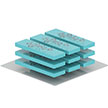 Organic semiconductors (OSCs) are a class of semiconductor materials consisting of conjugated molecules or polymers. Compared to inorganic semiconductors, OSCs have distinctive advantages including being solution-processable, suitable for low-cost and large-area fabrication of electronics, and applicable to flexible/stretchable electronics, among others. Given the importance of doping techniques for semiconductors, it is highly attractive to establish doping methodologies for OSCs similar to that for silicon. This would simplify the difficulty and cost of synthesizing different types of OSCs for various applications, as well as lead to interesting structures such as organic PN homojunctions.
Organic semiconductors (OSCs) are a class of semiconductor materials consisting of conjugated molecules or polymers. Compared to inorganic semiconductors, OSCs have distinctive advantages including being solution-processable, suitable for low-cost and large-area fabrication of electronics, and applicable to flexible/stretchable electronics, among others. Given the importance of doping techniques for semiconductors, it is highly attractive to establish doping methodologies for OSCs similar to that for silicon. This would simplify the difficulty and cost of synthesizing different types of OSCs for various applications, as well as lead to interesting structures such as organic PN homojunctions.
Jun 9th, 2022
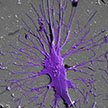 We are in the early stages of neural computing and have time to think through the ethical issues involved. Among other things, if neural computers become common, we will grapple with tissue donation issues. Scientists have found that human neurons were faster at learning than neurons from mice. Might there also be differences in performance depending on whose neurons are used? Might Apple and Google be able to make lightning-fast computers using neurons from our best and brightest today? Would someone be able to secure tissues from deceased genius's like Albert Einstein to make specialized limited-edition neural computers?
We are in the early stages of neural computing and have time to think through the ethical issues involved. Among other things, if neural computers become common, we will grapple with tissue donation issues. Scientists have found that human neurons were faster at learning than neurons from mice. Might there also be differences in performance depending on whose neurons are used? Might Apple and Google be able to make lightning-fast computers using neurons from our best and brightest today? Would someone be able to secure tissues from deceased genius's like Albert Einstein to make specialized limited-edition neural computers?
May 24th, 2022
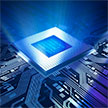 Resistive-switching memory (RSM) is an emerging candidate for next-generation memory and computing devices, such as storage-class memory devices, multilevel memories and as a synapse in neuromorphic computing. A significant challenge in the global research efforts towards better energy technologies is efficient and accurate device modeling. Now, researchers have created a new modeling toolkit which can predict the current of a new type of memory with excellent accuracy.
Resistive-switching memory (RSM) is an emerging candidate for next-generation memory and computing devices, such as storage-class memory devices, multilevel memories and as a synapse in neuromorphic computing. A significant challenge in the global research efforts towards better energy technologies is efficient and accurate device modeling. Now, researchers have created a new modeling toolkit which can predict the current of a new type of memory with excellent accuracy.
Aug 11th, 2021
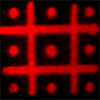 The bottleneck in atomic-scale data storage area may be broken by a simple technique, thanks to recent innovative studies. Through a simple, efficient and low-cost technique involving the focused laser beam and ozone treatment, researchers can manipulate the properties of nanomaterials, thereby 'writing' information onto monolayer materials. The result is a demonstration of the thinnest light disk with rewritable data storage and encryption functionalities at the atomic level.
The bottleneck in atomic-scale data storage area may be broken by a simple technique, thanks to recent innovative studies. Through a simple, efficient and low-cost technique involving the focused laser beam and ozone treatment, researchers can manipulate the properties of nanomaterials, thereby 'writing' information onto monolayer materials. The result is a demonstration of the thinnest light disk with rewritable data storage and encryption functionalities at the atomic level.
Jul 28th, 2021
 Researchers have developed a theory of piezoelectrics with the goal to increase coherence times in quantum computers. In new work, they elucidate the mechanism of energy absorption taking place in quantum computers, and recommends optimal materials for these devices. The new theory predicts qubit coherence times that are over 100 times greater than the current state of the art. This shows that material improvements can go a long way towards improving the quality of quantum computing devices, bringing quantum advantage one step closer.
Researchers have developed a theory of piezoelectrics with the goal to increase coherence times in quantum computers. In new work, they elucidate the mechanism of energy absorption taking place in quantum computers, and recommends optimal materials for these devices. The new theory predicts qubit coherence times that are over 100 times greater than the current state of the art. This shows that material improvements can go a long way towards improving the quality of quantum computing devices, bringing quantum advantage one step closer.
Nov 18th, 2020
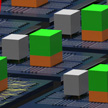 Researchers demonstrate that dust-sized photovoltaic cells grown on silicon substrate can be heterogeneously integrated with other chiplets using a high-throughput wafer-level packaging process. The ability to integrate various nanoelectronic chiplets - such as processor, memory, and photovoltaics - in an industrial-scale wafer-level-packaging process, unlocks the potential of large-scale manufacturing of these compact integrated systems with high performance and ultralow cost.
Researchers demonstrate that dust-sized photovoltaic cells grown on silicon substrate can be heterogeneously integrated with other chiplets using a high-throughput wafer-level packaging process. The ability to integrate various nanoelectronic chiplets - such as processor, memory, and photovoltaics - in an industrial-scale wafer-level-packaging process, unlocks the potential of large-scale manufacturing of these compact integrated systems with high performance and ultralow cost.
Oct 27th, 2020
 There is a huge effort underway to use memristor devices in neuromorphic computing applications and it is now reasonable to imagine the development of a new generation of artificial intelligent devices with very low power consumption (non-volatile), ultra-fast performance and high-density integration. In new work,r esearchers were not only able to achieve to small switching effects in memristors using light, they take advantage of a percolating-like nanoparticle morphology to vastly increase the magnitude of the switching between electronic resistance states when light is incident on the device.
There is a huge effort underway to use memristor devices in neuromorphic computing applications and it is now reasonable to imagine the development of a new generation of artificial intelligent devices with very low power consumption (non-volatile), ultra-fast performance and high-density integration. In new work,r esearchers were not only able to achieve to small switching effects in memristors using light, they take advantage of a percolating-like nanoparticle morphology to vastly increase the magnitude of the switching between electronic resistance states when light is incident on the device.
Jun 19th, 2019
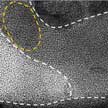 For the first time, researchers have successfully developed a new version of phase-change memory that reduces the switching time and allows memory cells to produce excellent stability.
The new type of phase-change memory can be as fast as state-of-the-art RAM chips being considered to power artificial intelligence (AI) in phones, and it could also be used to power a range of other smart devices. The new version of phase-change memory could be manufactured with a cheap process: The procedure uses a normal voltage pulse and requires no additional special materials.
For the first time, researchers have successfully developed a new version of phase-change memory that reduces the switching time and allows memory cells to produce excellent stability.
The new type of phase-change memory can be as fast as state-of-the-art RAM chips being considered to power artificial intelligence (AI) in phones, and it could also be used to power a range of other smart devices. The new version of phase-change memory could be manufactured with a cheap process: The procedure uses a normal voltage pulse and requires no additional special materials.
Dec 31st, 2018
 Organic semiconductors (OSCs) are a class of semiconductor materials consisting of conjugated molecules or polymers. Compared to inorganic semiconductors, OSCs have distinctive advantages including being solution-processable, suitable for low-cost and large-area fabrication of electronics, and applicable to flexible/stretchable electronics, among others. Given the importance of doping techniques for semiconductors, it is highly attractive to establish doping methodologies for OSCs similar to that for silicon. This would simplify the difficulty and cost of synthesizing different types of OSCs for various applications, as well as lead to interesting structures such as organic PN homojunctions.
Organic semiconductors (OSCs) are a class of semiconductor materials consisting of conjugated molecules or polymers. Compared to inorganic semiconductors, OSCs have distinctive advantages including being solution-processable, suitable for low-cost and large-area fabrication of electronics, and applicable to flexible/stretchable electronics, among others. Given the importance of doping techniques for semiconductors, it is highly attractive to establish doping methodologies for OSCs similar to that for silicon. This would simplify the difficulty and cost of synthesizing different types of OSCs for various applications, as well as lead to interesting structures such as organic PN homojunctions.
 Subscribe to our Nanotechnology Spotlight feed
Subscribe to our Nanotechnology Spotlight feed





